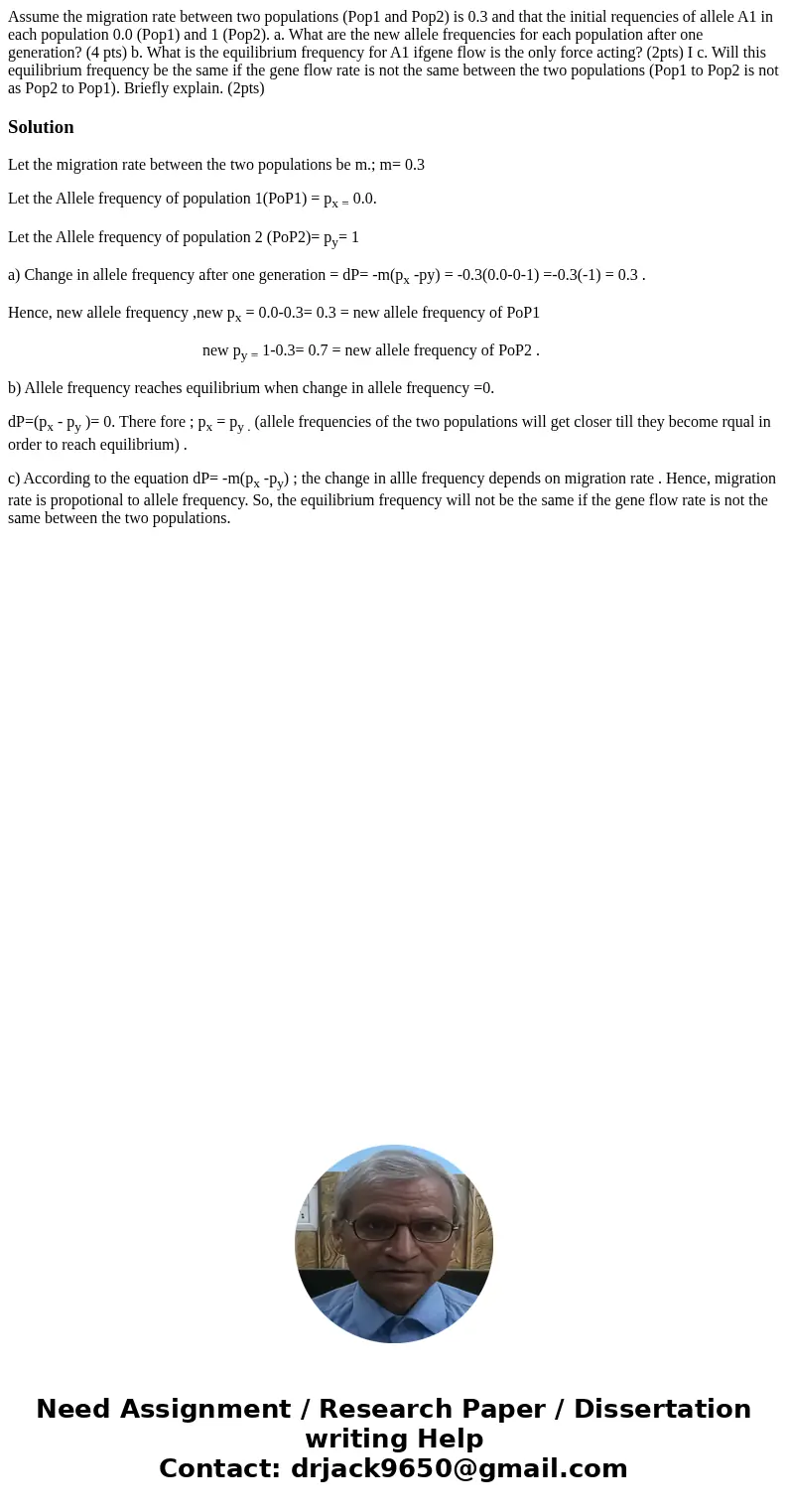Assume the migration rate between two populations Pop1 and P
Solution
Let the migration rate between the two populations be m.; m= 0.3
Let the Allele frequency of population 1(PoP1) = px = 0.0.
Let the Allele frequency of population 2 (PoP2)= py= 1
a) Change in allele frequency after one generation = dP= -m(px -py) = -0.3(0.0-0-1) =-0.3(-1) = 0.3 .
Hence, new allele frequency ,new px = 0.0-0.3= 0.3 = new allele frequency of PoP1
new py = 1-0.3= 0.7 = new allele frequency of PoP2 .
b) Allele frequency reaches equilibrium when change in allele frequency =0.
dP=(px - py )= 0. There fore ; px = py . (allele frequencies of the two populations will get closer till they become rqual in order to reach equilibrium) .
c) According to the equation dP= -m(px -py) ; the change in allle frequency depends on migration rate . Hence, migration rate is propotional to allele frequency. So, the equilibrium frequency will not be the same if the gene flow rate is not the same between the two populations.

 Homework Sourse
Homework Sourse